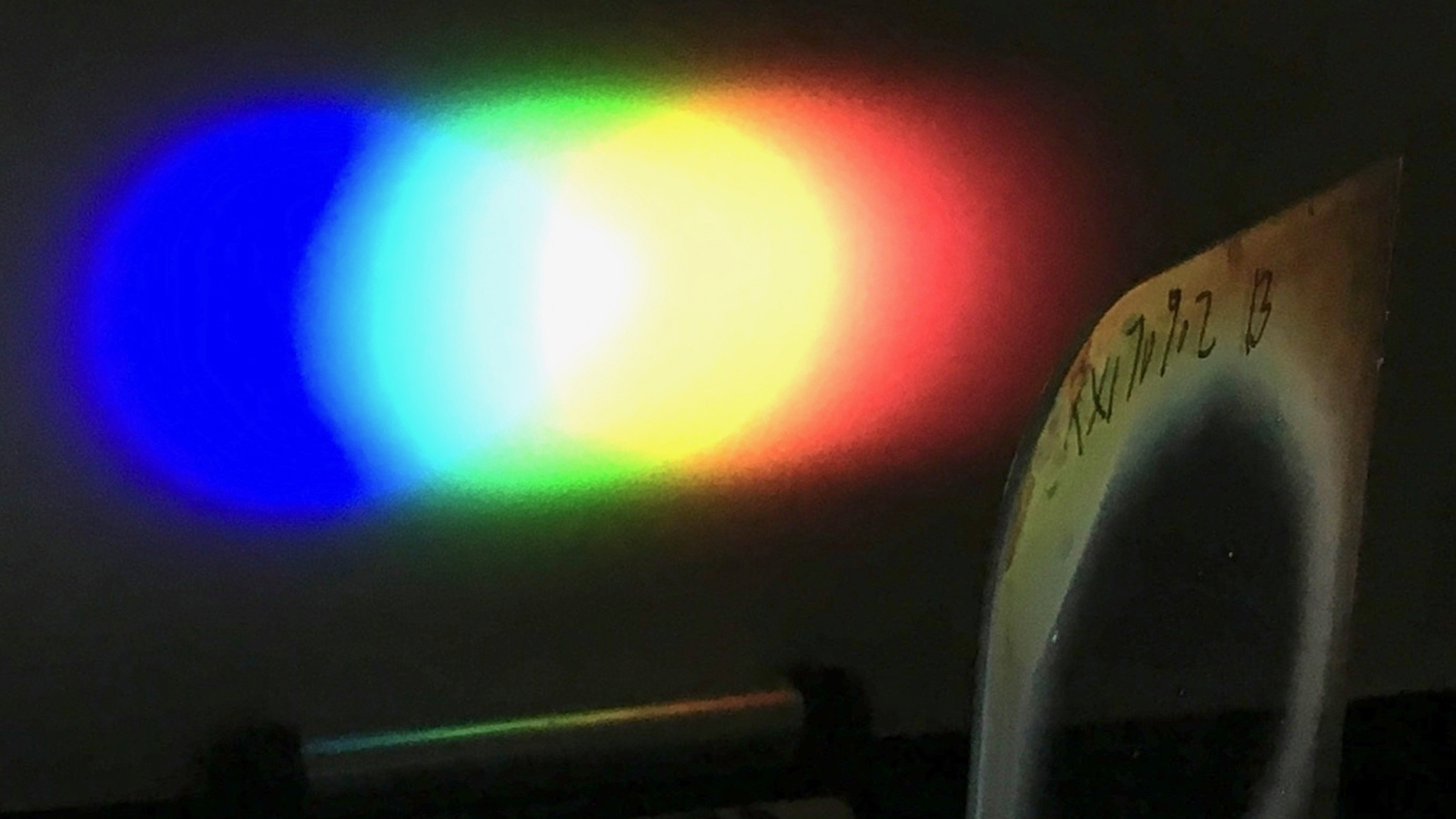Tech Bends Light More Efficiently, Offers Wider Angles for Light Input

Engineering and physics researchers at North Carolina State University have developed a new technology for steering light that allows for more light input and greater efficiency – a development that holds promise for creating more immersive augmented-reality display systems.
At issue are diffraction gratings, which are used to manipulate light in everything from electronic displays to fiber-optic communication technologies.
“Until now, state-of-the-art diffraction gratings configured to steer visible light to large angles have had an angular acceptance range, or bandwidth, of about 20 degrees, meaning that the light source has to be directed into the grating within an arc of 20 degrees,” says Michael Escuti, a professor of electrical and computer engineering at NC State and corresponding author of a paper on the work. “We’ve developed a new grating that expands that window to 40 degrees, allowing light to enter the grating from a wider range of input angles.
“The practical effect of this – in augmented-reality displays, for example – would be that users would have a greater field of view; the experience would be more immersive,” says Escuti, who is also the chief science officer of ImagineOptix Corp., which funded the work and has licensed the technology.
The new grating is also significantly more efficient.
“In previous gratings in a comparable configuration, an average of 30 percent of the light input is being diffracted in the desired direction,” says Xiao Xiang, a Ph.D. student at NC State and lead author of the paper. “Our new grating diffracts about 75 percent of the light in the desired direction.”
This advance could also make fiber-optic networks more energy efficient, the researchers say.
The new grating achieves the advance in angular bandwidth by integrating two layers, which are superimposed in a way that allows their optical responses to work together. One layer contains molecules that are arranged at a “slant” that allows it to capture 20 degrees of angular bandwidth. The second layer is arranged at a different slant, which captures an adjacent 20 degrees of angular bandwidth.
The higher efficiency stems from a smoothly varying pattern in the orientation of the liquid crystal molecules in the grating. The pattern affects the phase of the light, which is the mechanism responsible for redirecting the light.
“The next step for this work is to take the advantages of these gratings and make a new generation of augmented-reality hardware,” Escuti says.
The paper, “Bragg polarization gratings for wide angular bandwidth and high efficiency at steep deflection angles,” is published in the journal Scientific Reports. The paper was co-authored by Jihwan Kim, a research assistant professor of electrical and computer engineering at NC State.
-shipman-
Note to Editors: The study abstract follows.
“Bragg polarization gratings for wide angular bandwidth and high efficiency at steep deflection angles”
Authors: Xiao Xiang, Jihwan Kim and Michael J. Escuti, North Carolina State University
Published: May 8, Scientific Reports
DOI: 10.1038/s41598-018-25535-0
Abstract: Optical films and surfaces using geometric phase are increasingly demonstrating unique and sometimes enhanced performance compared to traditional elements employing propagation phase. Here, we report on a diffraction grating with wider angular bandwidth and significantly higher average first-order efficiency than the nearest prior art of metasurfaces, volume holographic gratings, and surface-relief gratings configured to achieve a steep deflection angle. More specifically, we demonstrate a liquid crystal (LC) polymer Bragg polarization grating (PG) with large angular bandwidth and high efficiency in transmission-mode for 532 nm wavelength and 400 nm period. Angular bandwidth was significantly increased by arranging two slanted grating layers within the same monolithic film. First, we studied the optical properties with simulation and identified a structure with 48° angular bandwidth and 70% average first-order efficiency. Second, we fabricated a sample using a photo-aligned chiral nematic LC, where the two grating slants were controlled by the chiral dopants. We measured 40 angular bandwidth, 76% average efficiency, and 96% peak efficiency. Strong input polarization sensitivity (300:1 contrast) and spectral bandwidth (200 nm) mostly matched prior PGs. This approach is especially advantageous for augmented-reality systems and nonmechanical beam steering.
This post was originally published in NC State News.


